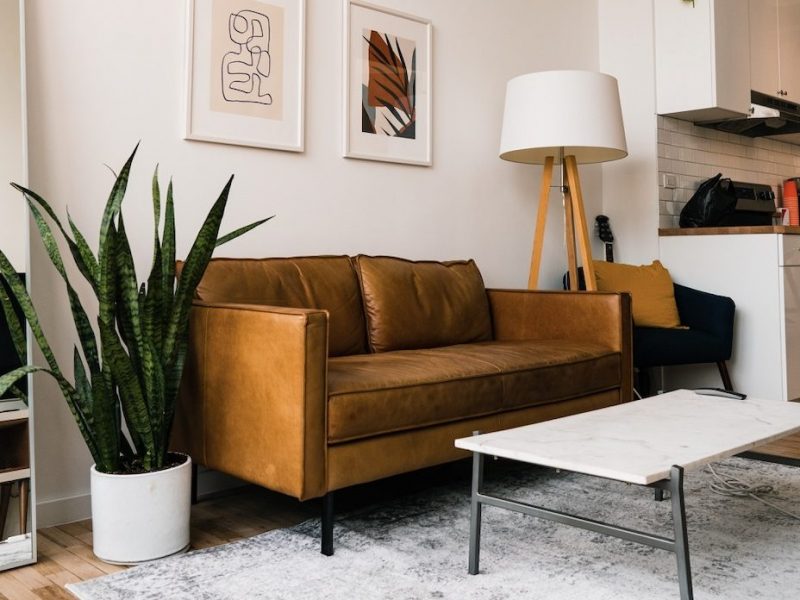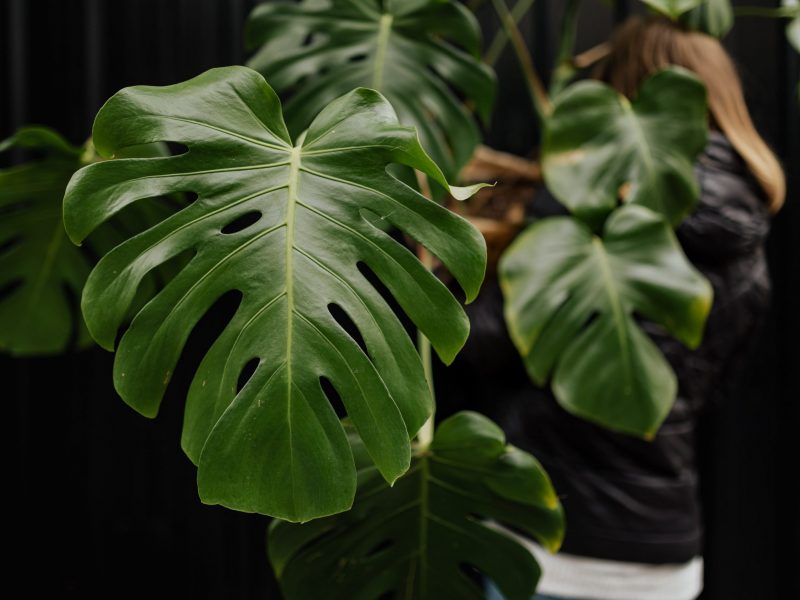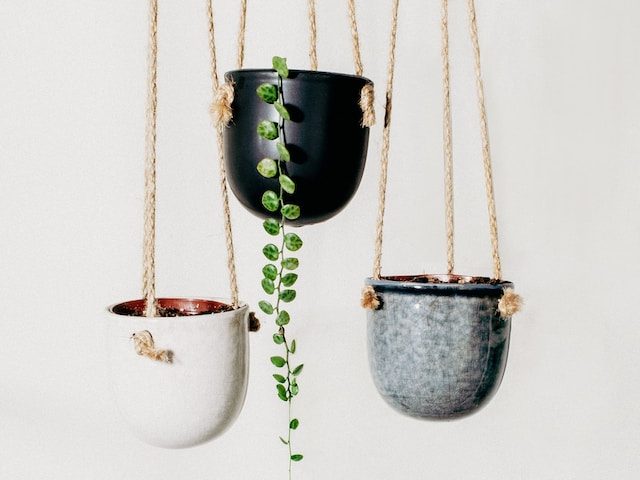
Top Plants for your Living Room
Our living room is arguably one of the most important rooms in the house as it’s used to entertain guests and relax after a long day! By adding in the right houseplants, you can transform your living room into a cosy, calming and relaxing space for you and the family, whilst still making a statement and impressing guests you invite over.
We have curated the best houseplants for your living room space below. Some need a lot of space, whilst others can cascade beautifully down your living room shelves. Oh and some even have air-purifying qualities too!

African Mask Plant
Alocasia amazonica
If there is one plant that has risen up the popularity ranks recently, it’s the African Mask Plant! You can now buy these at basically every plant shop, market and superstore globally as they are definitely the most popular of the Alocasia family. And we totally understand why they have become so popular, their intense glossy shield-like leaves are adorned with strong white veins which really make them something special for your living room.
They aren’t a great plant for beginners, however, as they do require decent light levels, as well as warm temperatures and a consistently high humidity level. Misting this plant is really crucial or it’ll start to develop some issues.
If in the right environment, your African Mask Plant can grow well above 1 metre but this will take many years as they don’t produce that many new leaves each year. This is why it’s crucial you take good care of the leaves your plant does have by regularly dusting and inspecting for issues.
Find out more in our African Mask Plant care guide.

Fiddle Leaf Fig
Ficus lyrata
Native to the rainforests of central Africa, Fiddle Leaf Fig Trees are really stealing all of the attention right now. Their giant dark green glossy veined leaves give you that instant tropical feeling, right in your own home. They actually get their name from their violin-shaped leaves, similar to a Fiddle. Fiddle Leaf Fig Trees like a nice warm, humid environment with plenty of sunshine and a good amount of water to support a strong root system.
If you’re looking for a large plant to become the focal point of your living room, then look no further as they can grow up to 3 metres tall in the right environment. It’s important to note though that Fiddle Leaf Figs are toxic to pets and humans so not the best chance if there is a risk of leaves being ingested…
You should be able to find a Fiddle Leaf at most independent plant shops globally, but they can have quite a big price tag if you’re looking for a more mature one.
Find out more in our Fiddle Leaf Fig care guide.

Bird of Paradise
Strelitzia Reginae
If you’re dreaming of a tropical getaway, then a Bird of Paradise is the next best thing. Native to South Africa, they are loved for their incredible orange and blue leaves that resemble birds (which explains the name). It’s really important that you keep your pets away from the flowers and leaves as they can be very toxic if ingested so we don’t really recommend this one to pet parents, unfortunately.
It’s also important that you have a lot of space when buying a Bird of Paradise plant as they do grow up to about 2 metres in size. But if you have the space for it in your living room, then they are the perfect plant for those looking for something a little more exotic.
Find out more in our Bird of Paradise care guide.

Kentia Palm
Howea forsteriana
Kentia Palms are pretty hardy plants that can stand environments that many other houseplants wouldn’t be able to, making them quite easy to care for. They can grow up to 40 feet outdoors but will rarely get over 13 feet when kept indoors.
They can be quite fussy about watering however and prefer to get little and often as this stops their soil from drying out completely or being soggy for longer periods of time. They also aren’t great with having dusty leaves, so we recommend wiping them down with a damp cloth every now and then to keep them clean.
The good news is that they are completely safe and non-toxic, so perfect for homes with pets or kids!
Find out more in our Kentia Palm care guide.

Swiss Cheese Plant
Monstera deliciosa
Native to the rainforests of Central America, the Monstera Deliciosa has very quickly become the most fashionable and photographed houseplant ever. And it’s not difficult to understand why… If their large dark green glossy heart-shaped leaves weren’t enough, their unique splits surely will be!
You might be surprised to learn that the Monstera isn’t actually a fussy plant and is pretty easy to take care of. Bright but indirect light, moderate amounts of water and regularly misting are really the main things to remember.
You’ll find that a lot of more mature Monstera plants are sold with a moss pole as they are climbing plants. In the rainforest, the ariel roots that pop out from the stems will attach themselves to other plants as the plant matures. So a moss pole is a good substitution to help your plant grow and mature.
Find out more in our Swiss Cheese Plant care guide.

Rubber Plant
Ficus elastica
The name Rubber Plant comes from the latex in the leaves, which was once used to actually make rubber! They are a great plant to bring a little bit of that rainforest feel right into your living room. And whilst they can reach about 30 metres in their native environment, when potted in your home they’ll be much smaller don’t worry!
Caring for your Rubber Plant doesn’t have to be difficult. Good light levels and not too much water are the basics to remember. As they are native to Southern Asia, they love humidity and will really struggle with dry air so regularly misting will keep your plant happy and healthy.
Find out more in our Rubber Plant care guide.

Marble Queen Pothos
Epipremnum Pinnatum
There are so many different varieties of Pothos plants, all with slightly different leaf variegation but the Marble Queen is definitely one of our favourites. Getting its name from the cream marble-like variegation on its leaves, it’s an easy-going, hardy and low light loving plant that can adapt to most spots in your home.
The Marble Queen Pothos is a pretty fast-growing plant so make sure you have enough space for it to mature. You can choose to grow them as trailing plants with long cascading vines (this is a great choice if you have large shelves in your living room) or vertically by attaching them to a moss pole. Pothos plants are unfortunately toxic so you’ll want to keep them away from pets and small children who might try and nibble on the low hanging leaves.
Find out more in our Marble Queen Pothos care guide.

Peace Lily
Spathiphyllum wallisii
There’s a reason that Peace Lilies are so popular, and it’s not just because of their incredible white flowers. They are super low maintenance plants that can adapt and thrive in most homes. They can tolerate all light levels which is super rare for houseplants. It’s the perfect plant to bring a little bit of calm to an often hectic and busy living space.
Our favourite thing about the Peace Lily is that it really helps us plant parents out by drooping its leaves when it really needs water. This can help you spot underwatering before it’s really a problem. Within minutes of watering, the leaves will perk up – it’s pretty cool! And if we haven’t sold you on the Peace Lily yet, then you should probably know that they are also one of the best plants at purifying the air and removing chemicals from your home!
Find out more in our Peace Lily care guide.

Schefflera
Schefflera arboricola
Also known as the Umbrella Plant because of their dome-shaped leaves, the Schefflera is not only easy to care for but it’s pretty unique too! A mature Schefflera can sometimes have up to 16 little leaves off one stalk, whilst smaller plants may only have 4 or 5.
When it comes to caring for your Schefflera, they are quite hardy and adapt well to different environments. You don’t need to worry about humidity levels etc so it’s pretty simple. One thing to note is that it’s a good idea to rotate your plant every few weeks. Schefflera plants have a tendency to lean towards the light so can become quite unbalance if not turned regularly.
Unfortunately, Scheffleras are toxic to pets and humans so you need to keep this one away from small children or any furry friends that might be tempted to take a bite.
Find out more in our Schefflera care guide.

Philodendron Birkin
Philodendron Birkin
This used to be an extremely rare and unknown plant but over the past few years, it’s definitely gained a place in the houseplant walk of fame! Unlike a lot of its Philodendron relatives, the Birkin is a non-vining plant that stays pretty compact, making it great for windowsills or if you don’t have a lot of empty space in your living room.
Loved for their green and cream striped leaves, the Philodendron Birkin needs a humid environment to really thrive. This is because they are native to the rainforests of Brazil so be prepared for regularly misting (or just buy a humidifier), as otherwise, you’ll see brown leaves appear pretty quickly. With the right care and environment, the Birkin can be a pretty quick grower so it’s definitely worth a little bit of extra hassle.
Find out more in our Philodendron Birkin care guide.














